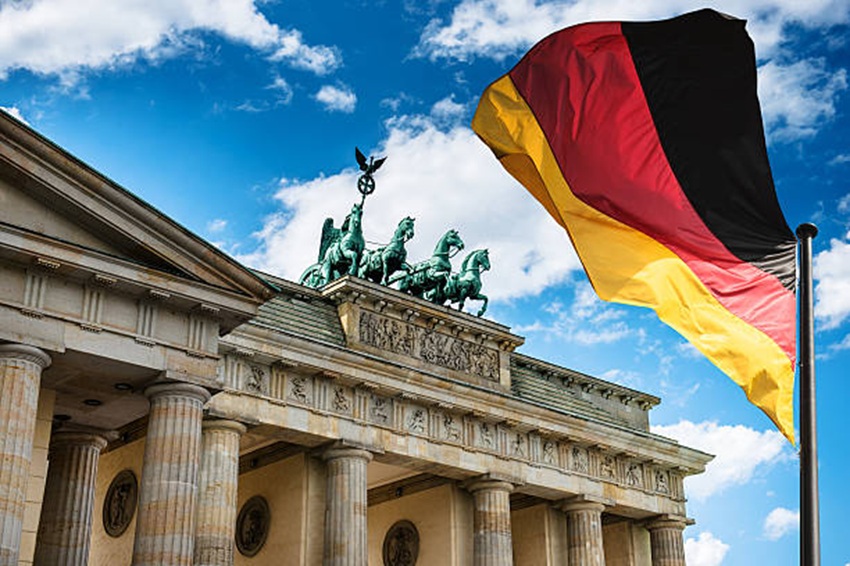Did you know that recent demographic data show there are about 108,000 German-born residents living in Australia? On top of that, over a million Australians identify as having German ancestry. Whether you’re one of them and looking to celebrate your cultural roots, or simply have an appreciation for German traditions, understanding the country’s flag, its story, meaning, and proper use is a great place to start.
The Story Behind the Flag

Most people are familiar with the recognisable Germany flag, with three horizontal stripes of black, red, and gold, which holds a long and layered history. Though these colours have appeared at various points throughout Germany’s past, the current version is a modern symbol of national unity, democracy, and freedom.
Its origins stretch back to the early 1800s, during the Napoleonic Wars. A volunteer group known as the Lützow Free Corps, mainly students and young idealists, formed to fight against Napoleon’s occupation. Their uniforms, featuring black fabric with red trims and gold buttons, were more practical than symbolic at the time. Still, the colour combination left a lasting impression and eventually started representing a shared desire for a unified and independent German state.
By 1848, these colours were adopted by the Frankfurt Parliament, Germany’s first national assembly, in its attempt to form a constitutional democracy. Although the movement for a united Germany failed, and the German Empire later introduced a different flag (black, white, and red), black-red-gold remained tied to progressive and liberal ideals.
The 20th century brought significant disruptions that also reflected in the country’s flags. The Weimar Republic reinstated the black-red-gold design to symbolise its democratic foundations. However, this was later replaced by the swastika flag during the Nazi regime, associating national symbols with dictatorship and aggression.
After WWII, Germany was divided, and each side handled the flag differently. West Germany officially brought back the black-red-gold banner in 1949 to reaffirm its democratic values. East Germany used the same colours but added a socialist emblem to represent its communist government.
Following the reunification of East and West Germany in 1990, the plain black-red-gold flag became the official national flag once again—this time as a lasting symbol of peace, unity, and a shared future.
What Does Germany’s Flag Mean?
What does the German flag represent in modern times? Far more than a simple design, it’s a reflection of the country’s journey through struggle, transformation, and hope.
Each colour carries symbolic weight:
- Black echoes the darker periods in Germany’s past marked by war, division, and hardship.
- Red symbolises the bravery and sacrifices in pursuit of justice, liberty, and national unity.
- Gold (often viewed as yellow in practice) represents optimism, enlightenment, and the promise of a better future.
Together, these colours speak to Germany’s evolution from conflict and authoritarianism to a country built on democratic ideals and human rights.
Interestingly, for much of the post-war era, Germans were reluctant to publicly display their flag, given the heavy connotations tied to nationalism. That sentiment has gradually shifted. Today, especially during global sporting events, the flag is proudly seen on everything from rooftops to face paint—reclaimed as a symbol of shared identity, pride, and unity.
No longer a source of controversy, the flag is now widely accepted as a positive representation of a modern, peaceful Germany.
When to Fly It (and When Not to)
If you’re thinking about flying the Germany flag to celebrate your heritage or mark a special occasion, it helps to know when it’s most appropriate to do so—and how to do it with respect. Here are some key moments when flying the flag makes perfect sense:
- German Unity Day (October 3rd) is a public holiday celebrating the 1990 reunification of East and West Germany—one of the most significant flag-flying days.
- Cultural festivals like Oktoberfest. Whether it’s a local beer event in Sydney or a community fair, the flag adds a festive and authentic touch.
- Sporting events: From the World Cup to the Olympics, fans worldwide proudly wave the German flag in a sign of support for their teams.
- Heritage celebrations. Honour your ancestry at family reunions, birthdays, or cultural heritage events by displaying the flag as a nod to your roots.
That said, flying a flag comes with a sense of responsibility. Being aware of these customs not only shows pride but also signals your appreciation for the deep meaning behind the flag. Here are some basic guidelines for respectful display:
- Avoid letting the flag touch the ground.
- Make sure it’s in good condition—no tears, fading, or frayed edges.
- Mount it securely, especially if displayed outdoors.
- When displayed with other national flags, ensure it’s flown at the same height and in the correct order of precedence.
The Importance of Choosing a Quality Flag
Whether you plan to hang it indoors as a piece of cultural pride or let it wave proudly at a public gathering, a well-made flag reflects the respect and appreciation you have for what it represents. In Australia, where the weather can swing from bright sun to heavy winds in a single afternoon, a durable flag is essential — especially if displayed outdoors. There are several reasons why investing in a well-made German flag is worthwhile.
- Durability. High-quality flags are crafted from materials that resist fading, tearing, and damage from the elements. Cheap versions tend to wear out quickly.
- Accuracy. A reputable flag will have the correct colour tones and proportions as per official specifications—essential for authenticity.
- Visual appeal. A good-quality flag hangs properly and moves more gracefully in the wind, making it visually striking during any event or ceremony.
- Value for money: Although better flags may come with a higher price tag, they typically last longer and maintain their appearance over time, saving you from frequent replacements.













